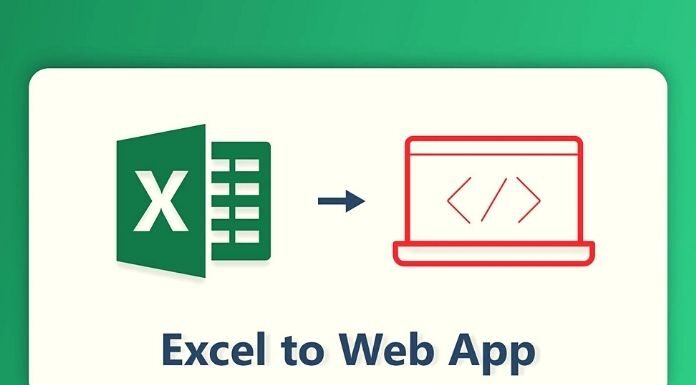Excel is a program with a thousand possibilities. Indeed you use it to organize your work, collect and sort data, and make calculations. But do you know that it can also perform much more complex operations? If we told you that you could even create a web app from an Excel sheet, would you believe it? And that it can all be done in minutes?
Creating A Web App From An Excel Spreadsheet
It allows you to revolutionize your business and make it more fruitful from every point of view. Many professionals still use Excel for tasks that shouldn’t be done with spreadsheets.
As experts in app development and promotion, we wanted to create this mini guide to explain how to transform the spreadsheets you are used to into database-based web apps to speed up and make your work much more efficient. There are several reasons why you should switch to a web app. The first reason is that a web application does not encounter compatibility problems.
You need a browser to access it, after which you can carry out any activity you wish. The second reason is that a web app is scalable, so it grows as your business grows, while an Excel spreadsheet isn’t because it doesn’t work as a database. Finally, web apps offer a higher level of security, such as protecting data entered through a password. But not only that, because advanced encryption systems are also provided. In short, creating a web app from an Excel sheet can only bring benefits to your work. Let’s find out now how to do all this.
How To Prepare The Excel Sheet
The number of sectors within which you can create a web app from an Excel spreadsheet is enormous and ranges from finance to real estate, from the medical industry to the automotive industry. In short, anyone can benefit from this method. Before proceeding with the creation of the web app, it is necessary to have created an Excel sheet with particular characteristics:
- Precise data: all the data entered must be accurate because no notes or corrections will be taken into account during the processing of the sheet;
- Headers: each list must have a title for the list to be recognized;
- Formatted cells: each cell provides input with a series of values (such as date, phone number, currency, etc.);
- No macros: it is advisable not to insert macros because they cannot be used within the app.
There are also many programs to create a web app from an Excel sheet. We at Next, professionals in developing and promoting an app, can help you in this step which takes a few minutes.
Here Are The Steps To Create An Excel Spreadsheet Web App
Now let’s get to the point. We said that this procedure requires only a few clicks. The steps for developing the web app are:
- Give the application a name: the first thing to do is choose the name you want to give the application;
- Choose the template: the next step is to select a template for the web app such as, for example, calendar, grid, email reader, which adapts to the use you have to make of it;
- Upload: once you have created the app, you need to upload the Excel sheet by directly choosing the file you have previously prepared;
- Choose the fields: at this point, you need to select the fields in the sheet you want to load into the app, and it is advisable to rename all the sections so that they are clear;
- Create the preview: clicking on one of the chosen fields, you get a preview view of the app’s appearance;
- Add elements: you can add new content, new calculation methods, or new data that make your web app more engaging and interactive;
- Launch the app: after having arranged all the fields during the preview, it is possible to launch the actual web app to intervene immediately on them;
- Save and send data: at this point, it is possible to create an application such as a dashboard or mobile app and then save the data in PDF format to send it to your work email and share it with the rest of the team.
Have You Seen How Many Things You Can Do?
With a web app, you can import data from an Excel sheet into a database, control user access, create forms to submit data, design dashboards to more easily monitor all information, and generate reports to show to colleagues. Furthermore, taking advantage of the cloud, you can access the web app at any time and from any device. All you need to do is connect to the Internet.
Also Read: JAVA VS. C++: WHAT ARE THE DIFFERENCES?


